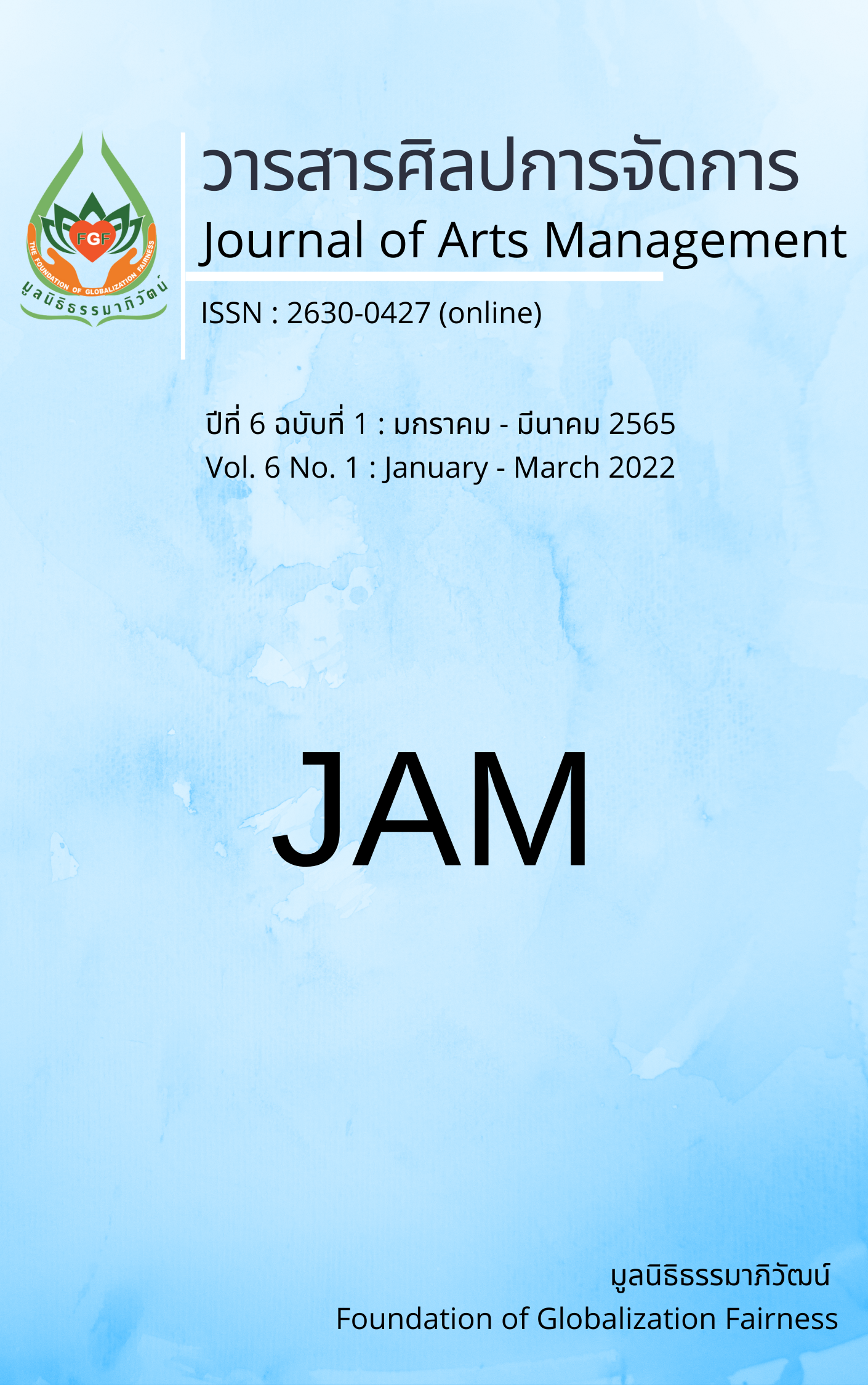Communication Strategies and Network of Organic Agriculture Phra Tan way, Tha Maka District, Kanchanaburi Province
Main Article Content
Abstract
This article aimed to 1. investigate the situation of organic agriculture in the Phra Thaen way; 2. investigate communication strategies and driving factors of organic agriculture in the Phra Thaen way; and 3. investigate communication networks of organic agriculture in the Phra Thaen way. Qualitative research methods were used consisting of in-depth semi-structured interviews, participatory observation, and community forums, with 45 key informants. The participants were leaders, members, government officers, private sectors, and others involved with organic agriculture in the Phra Thaen way.
It was found that 1. The situation of organic agriculture in the Phra Thaen way was divided into three phrases, including 1) the emergence of the concept of organic agriculture in the Phra Thaen way, 2) the dissemination of the concept of organic agriculture in the Phra Thaen way, and 3) the expansion of the concept of organic agriculture in the Phra Thaen way. 2. The communication strategies and driving factors for organic agriculture in the Phra Thaen way consisted of 1) strategies related to messengers, which were strategies of influencers 2) strategies for creating messages 3) Strategies for using media 4) strategies related to receivers factors of organic farming in the Phra Thaen way: 1) production factors, 2) distribution, 3) consumption, and 4) external support. 3. The communication networks for organic agriculture in the Phra Thaen way included 1) networks within the community, such as learning networks and network activities, and 2) out-of-community networks, which were supporting groups and collaborating groups.
Article Details

This work is licensed under a Creative Commons Attribution-NonCommercial-NoDerivatives 4.0 International License.
Views and opinions appearing in articles in the Journal of Arts of Management It is the responsibility of the author of the article. and does not constitute the view and responsibility of the editorial team I agree that the article is copyright of the Arts and Management Journal.
References
Chotinitiwattanakan, S. (2021). Interview. May, 14.
Emthong, S. (2020). Interview. November, 18.
Euajarusphan, A., & Natnicha, K. (2018). Communication strategies and network to develop a strong community: Case study of Hua Ta Khe community in Lat Krabang District, Bangkok. Dhurakij Pundit Communication Arts Journal, 12(2), 221-247.
Fonchingong, C., & Fonjong. L. (2002). The concept of self-reliance in community disruption initiatives in the Cameroon Grass Fileds. Geo Journal 57, 83–94. https://doi.org/10.1023/A:1026042718043
Kaewthep, K. et al. (2008). Basics of knowledge management “community communications”. Parbpim.
Kaewthep, K., & Chaikhunpon, N. (2012). New media study guide. The Thailand Research Fund.
Kuikae, W., & Wongwatthanaphong. K. (2021). Bio-way: Sustainable community development, Udon Thani. Journal of Roi Kaensarn Academi, 6(11), 273-287.
Laphirattanakun, W. (2010). Public relations. CU Print.
Na Pombegra, W. (2008). Decode economics to understand the economy. Saengdao.
Pilun-Owad, O. (2011). Persuasive communication. CU Print.
Puang-ngam, K. (2010). Community and Local Self-Governance. Winyuchon.
Rogers, E. M., & Kincaid, D. L. (1981). Communication networks: Toward a new paradigm for research. Free Press.
Sathapitanon, P. (2004). The main issues in communication and networks study. Faculty of Communication Arts, Chulalongkorn University.
Wiriyawit, N. (2019). Participatory communication model for farmers changing to organic agriculture, Bangkok. Research and Development Journal Suan Sunandha Rajabhat University, 11(1), 98-104.
Yooprasert, B. et al. (2008). Development of organizational management model community–based organization and integrated network. National Research Council of Thailand.


